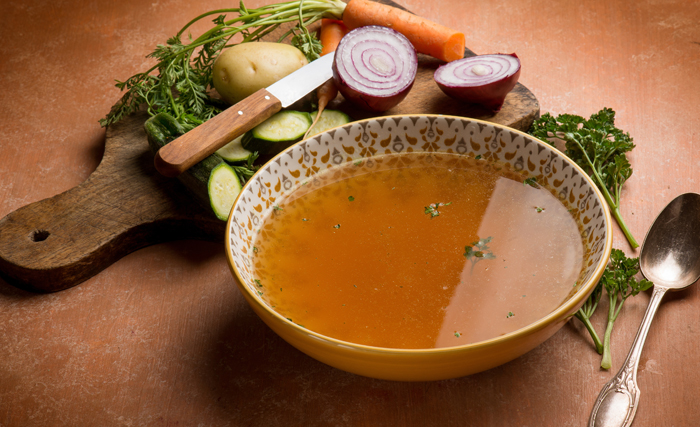How to Lower Blood Sugar Naturally
If you’re confused about diet and nutrition, you’re not alone.
At the Moday Center, we’ve worked with thousands of people who are trying to figure out the best diet for them and it can be incredibly frustrating.
Two people can feel monumentally different from each other on the same diet. Why? Because no one has the same physiology and nutrition needs! It’s all about bio-individuality.
Say you start a low-carb Paleo diet with your best friend. Two weeks in and she’s glowing! Her skin is better, she dropped 2 pounds, she has abundant energy and tells everyone she meets that she has found the fountain of youth.
You, on the other hand, feel like a rock. You are so fatigued that you can barely make dinner for your family before crawling into bed. You’re dizzy, irritable, and have gained 2 pounds. What gives??
BLOOD. SUGAR. IMBALANCES.
Blood sugar balance is essential because it affects energy levels, mental performance, and mood — not to mention being the hidden secret in weight loss.
You don’t have to be diagnosed with diabetes (high blood sugar) or hypoglycemia (low blood sugar) for blood sugar levels to be playing a major role in your health. In fact, many people suffer from the undiagnosed condition dysglycemia (imbalanced blood sugar).
What are some symptoms that your blood sugar is too low?
- Constipation
- Feeling dizzy or lightheaded upon standing quickly
- Feeling “hangry” between meals
- Feeling chronically chilled
- Having very cold fingers and toes
- Unintentional weight loss / unable to gain muscle
What are the signs that your blood sugar is too high?
- Craving something sweet or starchy with each meal
- Feeling tired after meals
- Not feeling hungry in the morning
- Slow wound healing and tissue regeneration
- Unable to lose weight
The good news? By implementing a few tweaks you can easily balance your blood sugar:
- Eat a vegetable starter at every meal. This blood sugar hack can be done anywhere, at any time, with any food! It’s especially great if you’re in a situation where you have no control over the food that’s available. It’s also helpful if you want to indulge a little at parties or when you’re eating out with friends. Starting your meal with a vegetable (this could be anything from a salad (bonus if you include vinegar in the dressing!), to carrot or celery sticks, to steamed broccoli.
- Make sure your meal contains enough fat & protein. Quality fats slow the absorption of glucose into the bloodstream, providing satiation and satisfaction. Protein helps pull sugar into the cells so your body can use it for energy. Having the protein and fat on your plate first and saving the carbohydrates for last, helps keep your blood sugar stable and your insulin from spiking after mealtime. So enjoy your baked sweet potato with a dollop of ghee and a portion of meat!
- Vinegar before meals. Just 1-2 tablespoons of vinegar per day can have a significant impact on lowering fasting blood glucose, insulin, and HbA1c levels (a measure of blood sugar control over time). Even better, including 1 tablespoon vinegar (any kind) in water prior to a meal can help blunt post-prandial glucose (the rise in blood sugar following a meal). Bragg’s Organic Raw Unfiltered Apple Cider Vinegar is our favorite because it’s not pasteurized, so you’re also getting that good gut-friendly bacteria, but any vinegar will work!
- Choose whole fresh fruits over fruit juice and dried fruits. Fresh fruit is a living food, containing a synergistic combination of enzymes, vitamins, soluble fiber and minerals. Fruit juice and dried fruit is concentrated sugar and doesn’t provide the satiating properties of whole fruits. For example, you can easily gulp a glass of apple juice in five minutes, but it contains the sugar equivalent of five apples!
- Go for a walk after meals. Light to moderate-intensity exercise (walking, biking, dancing) 30-45 minutes after a meal for about 20 minutes can significantly improve blood sugar and insulin levels. Additionally, gentle aerobic exercise after meals also increases adiponectin—a hormone responsible for enhancing insulin sensitivity, glucose control, fat metabolism, and lowering inflammation!
- Get quality sleep. Just one night of sleep deprivation can decrease insulin sensitivity by up to 25% — yikes! A lack of sleep also offsets hunger and satiety hormones, causing an increase in appetite and junk food cravings. Over time, lack of sleep can lead to insulin resistance, inflammation, weight gain, and increased risk for chronic diseases like type 2 diabetes, obesity, cardiovascular disease, depression, and cancer.
- Find ways to lower your stress. Aside from food, there are so many other factors that spike blood sugar and the most often overlooked is stress. When we feel stressed, our hypothalamus-pituitary-adrenal (HPA) axis is switched on and starts producing stress hormones. These hormones release glucose into the bloodstream (raising our blood sugar). This is a survival mechanism intended to save our lives from (perceived) life-threatening situations. However, in today’s modern day society this is happening much more frequently than ever before taking a serious toll on blood glucose regulation, insulin sensitivity, and metabolic health. In fact, studies show that high stress in healthy women is linked to more than double the risk of developing type 2 diabetes.
- Use a continuous glucose monitor to find your carbohydrate tolerance. Symptoms such as cravings, irritability, lethargy, and hyperactivity give insight into whether our blood sugar is too high or too low but it doesn’t tell us which foods you’re eating that cause blood sugar spikes or lows. That’s where continuous glucose monitors are so useful. Continuous glucose monitors (CGM) allow you to identify exactly which carbohydrates you can eat without going on a blood sugar rollercoaster ride, and what foods need to be avoided or limited to the occasional treat. They also allow you to track how your workout type and intensity, stress levels, and intermittent fasting impact blood sugar levels! CGMs allow you to gain insight into blood sugar balance instantly, rather than just once per year with standard lab work.
Our favorite CGM is by Veri and this is what we use in my practice. You can use my link to get 20% off (applied automatically).
Using a CGM for a month can give you significant information that can shape your health for the rest of your life. Managing blood sugar is foundational for metabolic health. Once you get that under control, everything else tends to fall into place (i.e. energy, mood, weight loss, lower inflammation).
We hope you’ll put these blood sugar balancing tweaks into place. By observing your body’s symptoms, making adjustments in how you eat and live, and gathering biofeedback data with a CGM, you can easily optimize your blood sugar balance and look forward to:
- Fewer cravings
- Less hunger
- Lower inflammation levels
- Clearer skin
- Healthier heart & brain
- Reduced risk of Alzheimers, cancer, and fatty liver disease
- Improved fertility
- Slower aging & wrinkle formation
Cheers to that!





